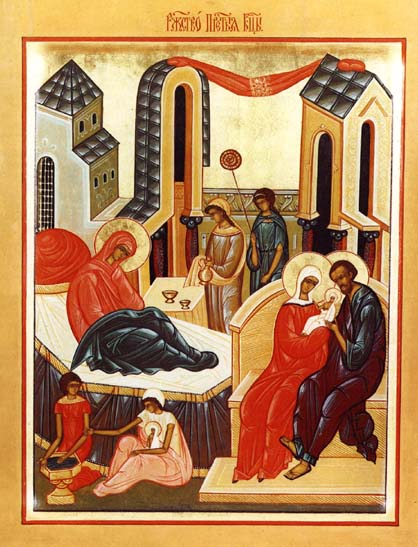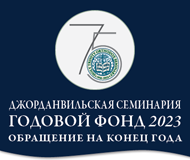News
-

September 14/27 – The Elevation of the Precious and Life-giving Cross
26 September 2010
“From the first days of the preaching of the apostles, already persecution of the Church of Christ began… The very places of the crucifixion, burial and resurrection of the Lord were covered with a multitude of stones and garbage in order only to take away from Christians the access to them and the ability to recognize them” (G. Lavrentiev. Twelve great feasts of the Orthodox Church, St. Petersburg, 1862). Yet, these holy places, keeping in memory the voluntary passion of the Saviour of the world, continued to draw the faithful.
In the beginning of the second century A.D. the roman emperor Hadrian completely rebuilt the Holy City and took away its ancient name; from then on Jerusalem was called Aelia Capitolina. Among other things, a decision was made to fill the hollow between Golgotha and the garden of Joseph of Arimathea. Later on, the entire plot of land adjacent to the place of the sufferings of the Lord on the cross was levelled; in order to do that, the top of Golgotha had to be cut and the cave of the Holy Tomb had to be filled. On this levelled place, the emperor erected a temple of Venus and Cupid.
As the result, exactly the opposite of what the enemies of Christ wanted took place: by the providence of God, the building of Hadrian as if marked the holy place, thus, excluding the possibility of loss of the knowledge that was preserved by the early Church.
Therefore, from 135 A.D, (when emperor Hadrian allowed Christians to return to Jerusalem) and until 326 A.D. (when St. Helena, the elderly mother of Equal-to-the-apostles Constantine, arrived in Jerusalem) the topographical history of the Gospel events, preserved in the original community of the faithful, managed – in the expression of the Greek Orthodox Encyclopaedia – “without dark spots”. St. Helena was able to find the Tomb of the Lord and the Trembling Golgotha. “They removed layer after layer, – describes the dig the contemporary of the finding, “the father of Church History” Eusebius Pamphilus. – And suddenly, in the depth of the earth, beyond any expectation, there appeared an empty space, and then – the precious and all-holy sign of the saving Resurrection”. That was the cave of the tomb.
In 351 A.D., St. Cyril of Jerusalem addressed the heir of St. Constantine – emperor Constantius – with a letter, where it is said exactly that “in the days of your father Constantine, may his memory be blessed”, near the Holy Tomb, the Life-giving Cross of the Lord was found. According to ancient tradition, the place, where the Holy Cross was buried, was pointed to – under duress – by someone named Judah, called “prophet’s son”.
But the unconquerable power of the Lord’s Cross reached him as well: seeing with his eyes the wonders from the unearthed instrument of a shameful death, Judah, along with others, his fellow countrymen, believed in the Crucified One “and was baptized, and in the holy baptism he was called Cyriacus; later on he became patriarch of Jerusalem. In the time of the emperor Julian the Apostate, he was tortured for Christ and having received a martyr’s wreath, was numbered among the saints”. (Lives of Saints, Word about the Elevation of the Cross of the Lord).
St. John Chrysostom says that it was possible to distinguish the Cross of Christ from those of the robbers, that were similar, by the table with an inscription made by the order of Pontius Pilate. In the description of the historian Sozomenus, that was included in the Lives of Saints, it is said that the tablet was found lying separately. It was possible to identify the Cross of Jesus only thanks to the miracle of the healing of a gravely ill woman and of the resurrection. “When the Patriarch with the Queen and the people, who were carrying the crosses out of the house of her that was healed, they met a large funeral procession of a certain Jew. Filled with faith, the Patriarch stopped the procession and having come up to the bier, placed all three crosses upon the dead man…; only the Cross of the Vanquisher of death and the Source of life broke the bonds of death and the dead man returned to life!”.
The discovered Tree, as is said in a letter of St. Cyril of Jerusalem, spread throughout the entire universe, for its parts were given to churches. People say that, to this day, requests go to the Jerusalem Patriarchate, to give to this or that local church a piece of the Holy Cross, but it is, of course, impossible to fulfill them: exactly this way, little by little, the portion of the Cross sent by St. Helena to Constantinople, vanished, ceased to be.
In 1799, during the reign of the Emperor Paul Petrovitch, the Ist, once he received the title of the great master of the Malta order, a portion of the Lifebearing Tree, along with other holy objects – the right hand of St. John the Baptist and the Icon of the Mother of God of Philermos – were brought from Malta to Russia, where they were kept in the Gatchina palace, then in the Winter palace, and when a cathedral in honour of Ss. Peter and Paul was erected in Gatchina, they once again returned to that town. The feast of the Philermos icon, in memory of the bringing of the wonderworking image to Russia, was set in 1800 on the 12th of October, Old Style.
After the October revolution of 1917 the holy objects ended up in the vestry of the Archangels’ cathedral of Moscow Kremlin, then in Estonia, Denmark, Germany, and finally, in Serbia. During World War II the relics were preserved in the Montenegro monastery. Almost ten years they were hidden in the monastery of St. Basil of Ostrog, but when in the beginning of the nineteen fifties, communists seized the power in Yugoslavia, they were taken and placed in a museum. Only in the summer of 1993, on the day of the feast of the nativity of St. John the Forerunner, the right hand of St. John the Baptist and a piece of the Life-giving Cross of the Lord were returned to the Church and given to the Cetinjski monastery of the Nativity of the Most Holy Theotokos.
When the Holy Objects left Russia, a copy of the icon of the Mother of God and a painting of the right hand of St. John the Forerunner were made in Gatchina. In the nineteen nineties, Gatchina Ss. Peter and Paul cathedral received as a gift a piece of the Tree of the Life-giving Cross of the Lord.
-

Nativity of our Most Holy Lady the Theotokos and Ever-Virgin Mary
20 September 2010
The Eastern Orthodox Church starts the count of the yearly circle of the feasts with the Nativity of the Mother of God and closes it with Her Dormition.
“She is the flower that budded forth from the barren and old womb of the dry tree, – is said of the Mother of God in the Lives of the Saints, – the flower that withers not, ever blooming with virginity, a fragrant flower, giving birth to the sweet fragrance of the One King, the flower bringing forth the fruit – Christ the Lord God, the only sweet smelling apple” (September, day 8).
The details of the Nativity of the Ever-Virgin, adopted by iconography and the order of the festive service, are contained in the Sacred Scripture, the essence of which is transmitted by the so called “Protevangelium” of James the brother of God. The content of “Protevangelium” is found in the Lives of the Saints of St. Demetrius of Rostov.
“In the records of the twelve tribes of Israel was Joachim, a man rich exceedingly,” – says the “Protevangelium” of James. When the feast arrived once again, and he brought before the Lord generous gifts and offerings, one from the tribe of Ruben stood before him and reminded that Joachim, as a man with no offspring, should not come with first offerings because “he didn’t produce a first born in Israel”. Joachim was exceedingly vexed; he didn’t return to his wife Anna, but went into the desert and there set up his tent. Then, he fasted for forty days and forty nights, saying to himself: I shall neither turn to food nor drink, until the Lord my God will look upon me. Prayer shall be my food”.
Meanwhile, Anna’s maid tried to comfort her bitterly weeping mistress, but having heard: “Leave me!”, herself got offended: “Who am I that I should hear such a thing from you?! The Lord shut your womb, willing that your offspring be not accepted in Israel”. As we can see, the Lord’s choice demanded that the righteous couple humble themselves in the face of scorn, – for, in the words of the One, Who will soon come and be their Daughter, the Creator “sent the rich empty away”, however He heard the tearful and broken prayer of Joachim and Anna.
As the most ancient – partly written – sources, that mainly came to us from the apostolic century, state, the parents of the Most Holy Virgin owned a home in Jerusalem not far from the Sheep’s Pool, where, later, the Lord healed the paralytic, who was bound to his bed for thirty eight years.
A great basilica was erected at the place of this home, the memory of its location was passed down by the Palestinian Christians from generation to generation, during the Byzantine times; according to many archaeologists, this church at once covered both the home of the righteous God-parents and the Sheep’s Pool.
After the Third Ecumenical Council in Ephesus, when the tradition regarding the Nativity of the Ever-Virgin enter the service books of the church, the home of Joachim and Anna became known to the majority of the communities of the faithful. The Council took place in the year 431 AD, and by the end of the fifth century, the Nativity of Mary began to be celebrated in Jerusalem: specifically in the church at the place of the home of the holy God-parents, St. John of Damascus gave his Divinely inspired Homily: “The Day of the Nativity of the Theotokos is the feast of joy for the entire world because the entire race of men was renewed through the Theotokos… She is entirely the abode of the Spirit, entirely the city of God, entirely good, entirely God’s neighbour”.






